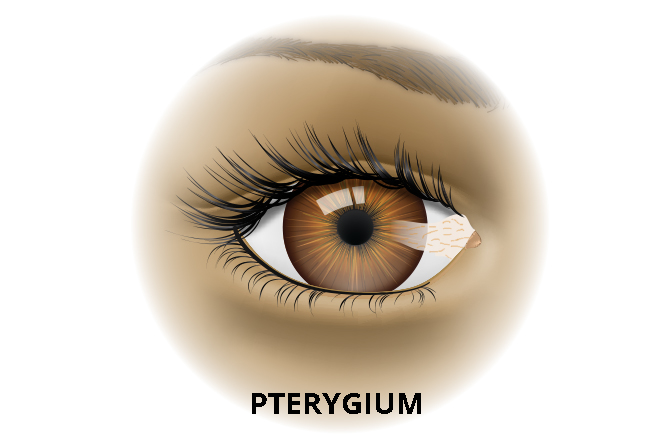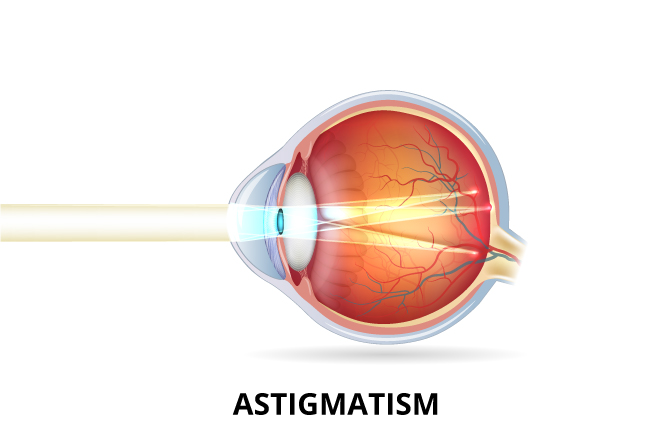
Astigmatism is a type of refractive error in which the eye does not focus light evenly on the retina. This results in distorted or blurred vision at all distances.

Cataracts are cloudy areas that develop within the eye lens. Since the lens in a healthy eye is clear like a camera lens, light has no problem passing through the lens to the back of the eye to the retina where images are processed. When a cataract is present, the light cannot get through the lens as easily and, as a result, vision can be impaired. Cataracts often form slowly, causing no pain, redness, or tearing in the eye. Some stay small and do not alter eyesight. If they become large or thick, cataracts can usually be removed by surgery.
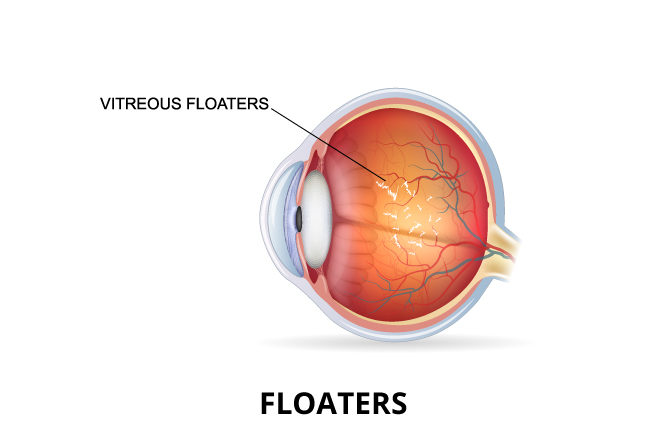
These are tiny spots or specks that float across the field of vision. Most people notice them in well-lit rooms or outdoors on a bright day. Floaters often are normal, but can sometimes indicate a more serious eye problem, such as retinal detachment, especially if they are accompanied by light flashes.
If you notice a sudden change in the type or number of spots or flashes you see, visit your eye doctor as soon as possible.

This condition occurs when there is a typical and progressive deterioration of the optic nerve. Glaucoma is often associated with an increased pressure of the eye. The eye is like a tire that generally has a normal and safe pressure. When this pressure is increased, it can be associated with damage to the optic nerve; this is called primary open angle glaucoma.
Secondary glaucoma is less common and can be caused by other factors such as injury to the eye, severe eye infection, blockage of blood vessels, or inflammatory disorders of the eye. Because most people with primary glaucoma have no early symptoms or pain, it is very important to get your eyes checked by an eye doctor regularly. Treatment may include prescription eye drops or surgery.
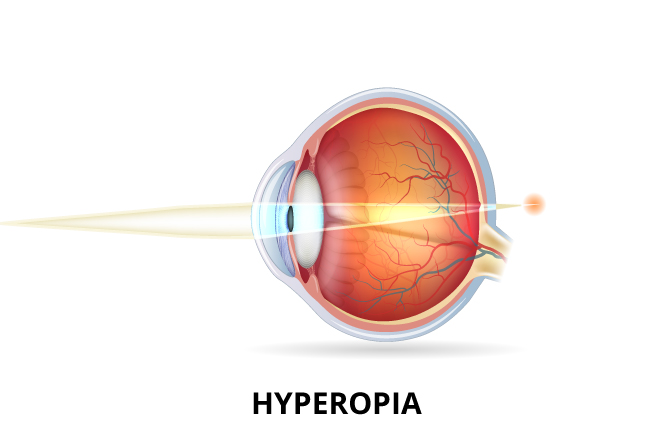
Hyperopia, also known as farsightedness, is a common type of refractive error where distant objects may be seen more clearly than objects that are near. However, people experience hyperopia differently. Some people may not notice any problems with their vision, especially when they are young.

Near-sightedness, also known as short-sightedness and myopia, is a condition of the eye where light focuses in front, instead of on the retina. This causes distant objects to be blurry while close objects appear normal. Other symptoms may include headaches and eye strain. Severe near-sightedness increases the risk of retinal detachment, cataracts, and glaucoma.

This is the loss of the ability to clearly see close objects or small print. It is a normal process that happens slowly over a lifetime, but you may not notice any change until after age 40. Presbyopia is often corrected with reading glasses.
This is a common eye condition that affects people who spend a lot of time outdoors. Because it often affects surfers, it is also known as surfer’s eye. It can affect anyone, though, even children who don’t wear sunglasses outside.
People with pterygium have a growth of pink, fleshy tissue on the white of the eye. The growth usually forms on the side closest to the nose and grows toward the center of the eye.
It is usually not a serious condition. It can, though, cause annoying symptoms such as the feeling of having a foreign body in the eye. Sometimes the growth becomes red and irritated and requires medical treatment.
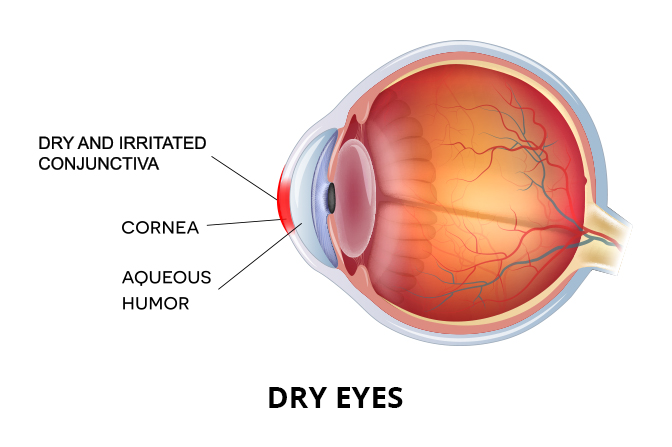
This happens when tear glands cannot make enough tears or produce poor quality tears. Dry eyes can be uncomfortable, causing itching, burning, or rarely some loss of vision.
Your eye doctor may suggest using a humidifier in your home, special eye drops that simulate real tears, or plugs that are placed in tear ducts to decrease tear drainage.
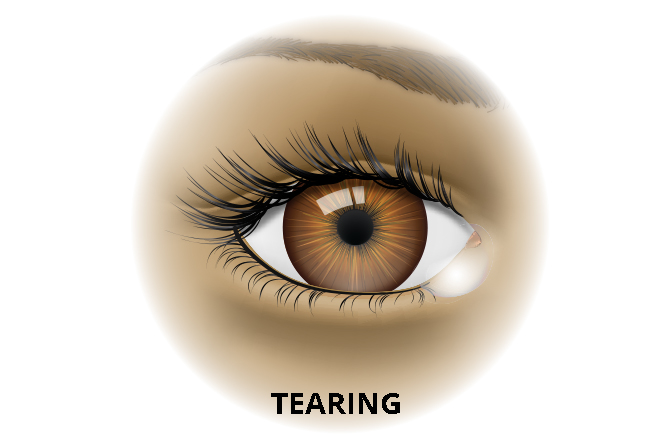
Having too many tears can come from being sensitive to light, wind, or temperature changes. Protecting your eyes by shielding them or wearing sunglasses can sometimes solve the problem. Tearing may also mean that you have a more serious problem, such as an eye infection or a blocked tear duct.
Your eye doctor can treat or correct both of these conditions.
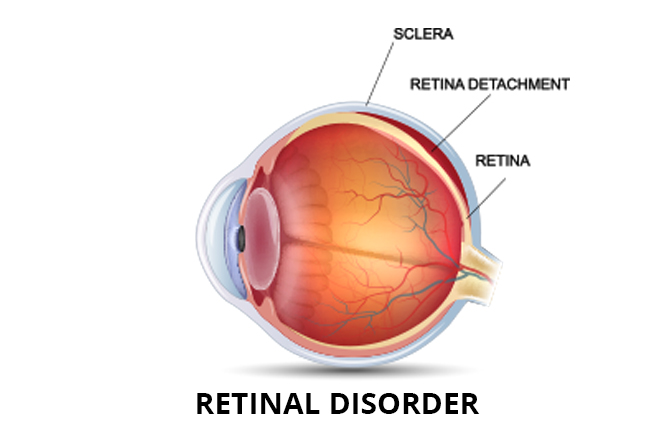
The retina is a thin lining on the back of the eye made up of cells that collect visual images and pass them on to the brain. Retinal disorders interrupt this transfer of images. They include age-related macular degeneration, diabetic retinopathy, and retinal detachment.
Early diagnosis and treatment of these conditions is important to maintain vision.
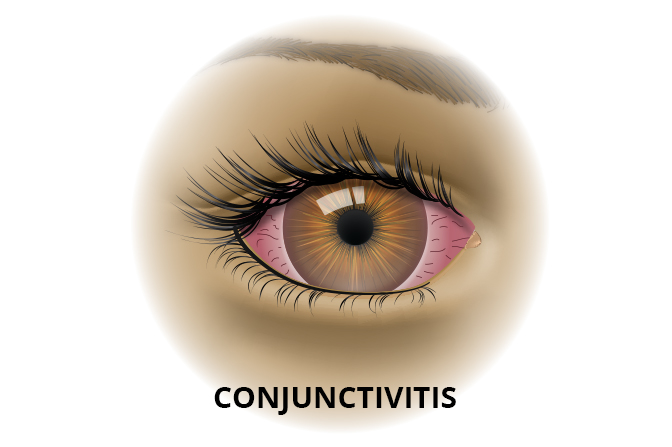
This is a condition in which the tissue that lines the eyelids and covers the cornea becomes inflamed. It is sometimes called “pink eye” or “red eye.” It can cause redness, itching, burning, tearing, discharge, or a feeling of something in the eye.
Conjunctivitis occurs in people of all ages and can be caused by infection, exposure to chemicals and irritants, or allergies.
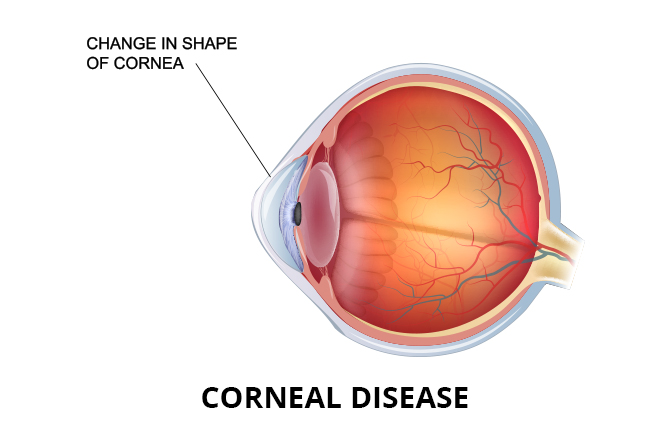
The cornea is the clear, dome-shaped “window” at the front of the eye. It helps to focus light that enters the eye. Disease, infection, injury, and exposure to toxic agents can damage the cornea causing eye redness, watery eyes, pain, reduced vision, or a halo effect.
Treatments include making adjustments to the eyeglass prescription, using medicated eye drops, or having surgery.
